Characterization of the Friction Coefficient of Aluminum Alloy 6061 in Ultra-Precision Machining
Abstract
1. Introduction
2. Diamond Cutting Experiment
3. Heat Treatment Experiment
4. Friction Test Experiment
5. Conclusions
- The cutting-induced heat in diamond cutting of Al6061 generated different types of precipitates on the chips and the machined surface.
- The AlFeSi particles generated during diamond cutting of Al6061 induced scratch marks, cracks and pits on the machined surface.
- This affects surface quality, changing the cutting forces and the contact conditions at the tool-chip and tool-workpiece interfaces.
- The number of AlFeSi particles in the Al6061 samples varied with different heating effects.
- The friction coefficients of the Al6061 samples were characterized in this study. The trend of the friction coefficients was similar to that of the AlFeSi particle number.
Author Contributions
Funding
Conflicts of Interest
References
- Miller, W.S.; Zhuang, L.; Bottema, J.; Wittebrood, A.J.; De Smet, P.; Haszler, A.; Vieregge, A. Recent development in aluminium alloys for the automotive industry. Mater. Sci. Eng., A 2000, 280, 37–49. [Google Scholar] [CrossRef]
- HIRSCH, J. Recent development in aluminium for automotive applications. T. Nonferr. Metal. Soc. 2014, 24, 1995–2002. [Google Scholar] [CrossRef]
- Zhan, H.; Mol, J.M.C.; Hannour, F.; Zhuang, L.; Terryn, H.; de Wit, J.H.W. The influence of copper content on intergranular corrosion of model AlMgSi(Cu) alloys. Mater. Corros. 2008, 59, 670–675. [Google Scholar] [CrossRef]
- Sekhar, A.P.; Mandal, A.B.; Das, D. Mechanical properties and corrosion behavior of artificially aged Al-Mg-Si alloy. J. Mater. Res. Technol. 2020, 9, 1005–1024. [Google Scholar] [CrossRef]
- Kairy, S.K.; Rometsch, P.A.; Diao, K.; Nie, J.F.; Davies, C.H.J.; Birbilis, N. Exploring the electrochemistry of 6xxx series aluminium alloys as a function of Si to Mg ratio, Cu content, ageing conditions and microstructure. Electrochim. Acta. 2016, 190, 92–103. [Google Scholar] [CrossRef]
- Wang, S.; To, S.; Chen, X.; Chen, X. An investigation on surface finishing in ultra-precision raster milling of aluminum alloy 6061. Proc. Inst. Mech. Eng., Part B 2014, 229, 1289–1301. [Google Scholar] [CrossRef]
- Kwon, K.B.; Cho, D.W.; Lee, S.J.; Chu, C.N. A Fluid Dynamic Analysis Model of the Ultra-Precision Cutting Mechanism. CIRP Ann. 1999, 48, 43–46. [Google Scholar] [CrossRef]
- Moriwaki, T.; Horiuchi, A.; Okuda, K. Effect of Cutting Heat on Machining Accuracy in Ultra-Precision Diamond Turning. CIRP Ann. 1990, 39, 81–84. [Google Scholar] [CrossRef]
- Kim, K.W.; Lee, W.Y.; Sin, H. A finite element analysis for the characteristics of temperature and stress in micro-machining considering the size effect. Int. J. Mach. Tools Manuf. 1999, 39, 1507–1524. [Google Scholar] [CrossRef]
- Wang, S.J.; Chen, X.; To, S.; Ouyang, X.B.; Liu, Q.; Liu, J.W.; Lee, W.B. Effect of cutting parameters on heat generation in ultra-precision milling of aluminum alloy 6061. Int. J. Adv. Manuf. Technol. 2015, 80, 1265–1275. [Google Scholar] [CrossRef]
- Abukhshim, N.A.; Mativenga, P.T.; Sheikh, M.A. Heat generation and temperature prediction in metal cutting: A review and implications for high speed machining. Int. J. Mach. Tools Manuf. 2006, 46, 782–800. [Google Scholar] [CrossRef]
- Melkote, S.N.; Grzesik, W.; Outeiro, J.; Rech, J.; Schulze, V.; Attia, H.; Arrazola, P.; M Saoubi, R.; Saldana, C. Advances in material and friction data for modelling of metal machining. CIRP Ann. 2017, 66, 731–754. [Google Scholar] [CrossRef]
- Rech, J.; Giovenco, A.; Courbon, C.; Cabanettes, F. Toward a new tribological approach to predict cutting tool wear. CIRP Ann. 2018, 67, 65–68. [Google Scholar] [CrossRef]
- Mondelin, A.; Valiorgue, F.; Rech, J.; Coret, M.; Feulvarch, E. Hybrid model for the prediction of residual stresses induced by 15-5PH steel turning. Int. J. Mech. Sci. 2012, 58, 69–85. [Google Scholar] [CrossRef]
- Özel, T. The influence of friction models on finite element simulations of machining. Int. J. Mach. Tools Manuf. 2006, 46, 518–530. [Google Scholar] [CrossRef]
- Benabdallah, H.S. Static friction coefficient of some plastics against steel and aluminum under different contact conditions. Tribol. Int. 2007, 40, 64–73. [Google Scholar] [CrossRef]
- Fuh, K.; Wu, C. A residual-stress model for the milling of aluminum alloy (2014-T6). J. Mater. Process. Technol. 1995, 51, 87–105. [Google Scholar] [CrossRef]
- Shaw, M.C. Metal Cutting Principles; Oxford University Press: Oxford, UK, 2005; Volume 2. [Google Scholar]
- Trent, E.M.; Wright, P.K. Metal Cutting; Butterworth-Heinemann: Oxford, UK, 2000. [Google Scholar]
- Atlati, S.; Haddag, B.; Nouari, M.; Zenasni, M. Thermomechanical modelling of the tool–workmaterial interface in machining and its implementation using the ABAQUS VUINTER subroutine. Int. J. Mech. Sci. 2014, 87, 102–117. [Google Scholar] [CrossRef]
- Pan, L.S.; Kania, D.R. Diamond: Electronic Properties and Applications; Springer Science & Business Media: Berlin, Germany, 2013. [Google Scholar]
- Olson, J.R.; Pohl, R.O.; Vandersande, J.W.; Zoltan, A.; Anthony, T.R.; Banholzer, W.F. Thermal conductivity of diamond between 170 and 1200 K and the isotope effect. Phys. Rev. B 1993, 47, 14850–14856. [Google Scholar] [CrossRef] [PubMed]




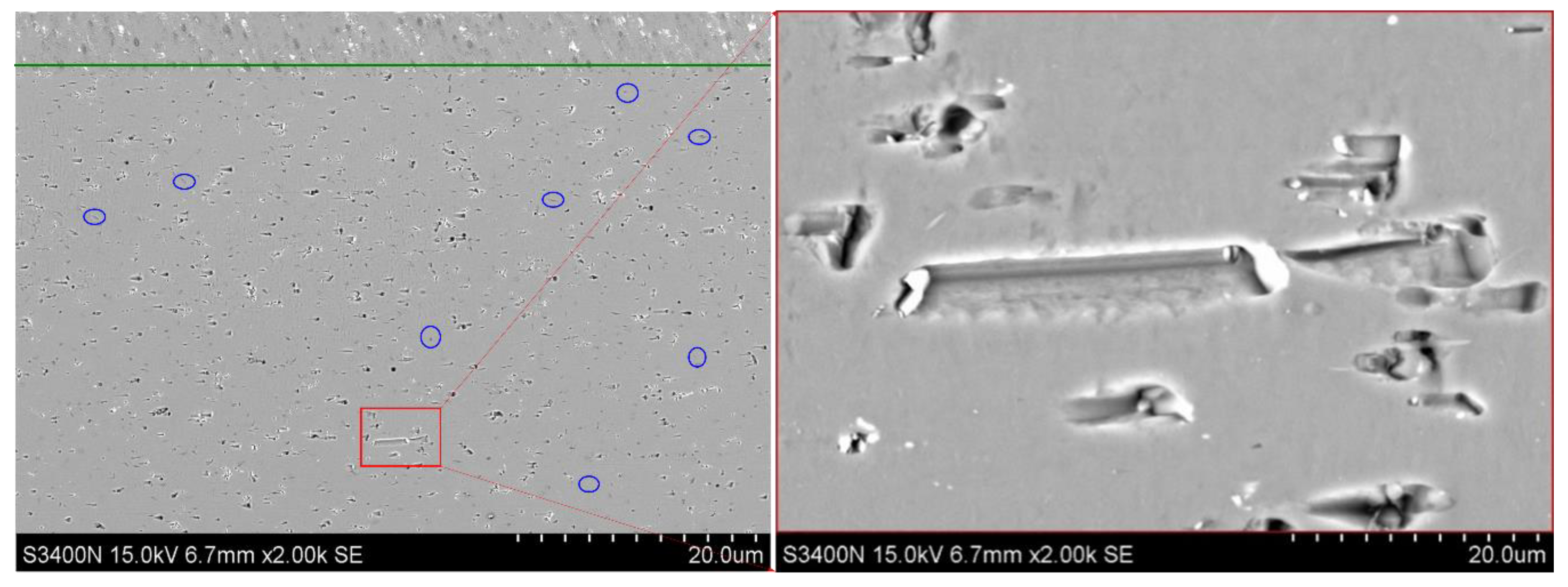
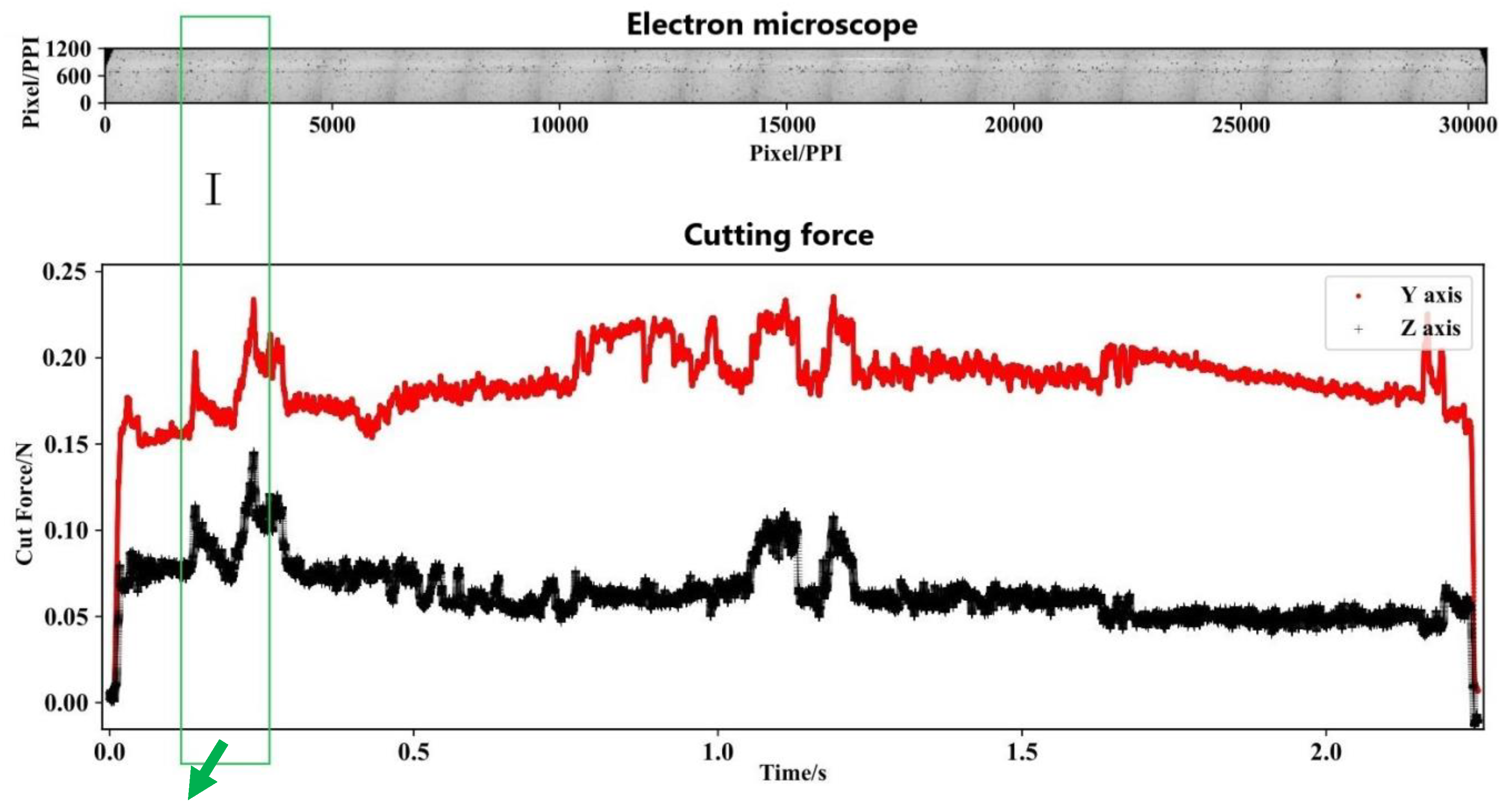

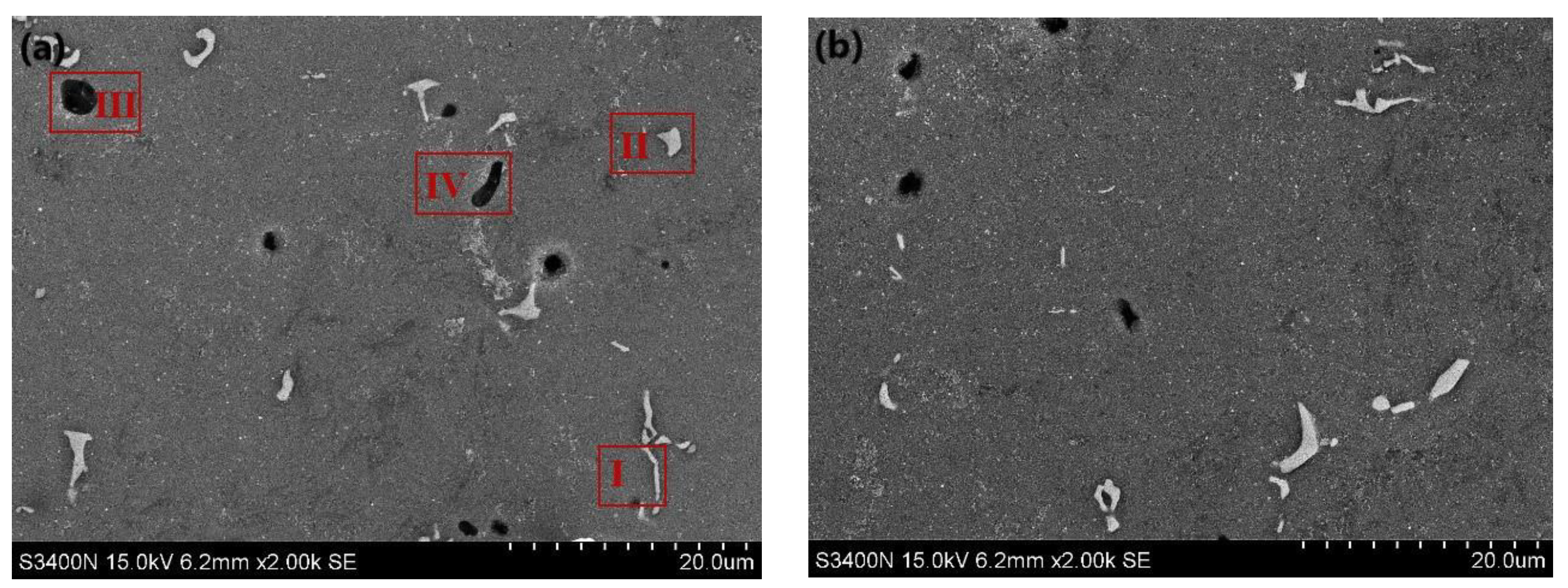



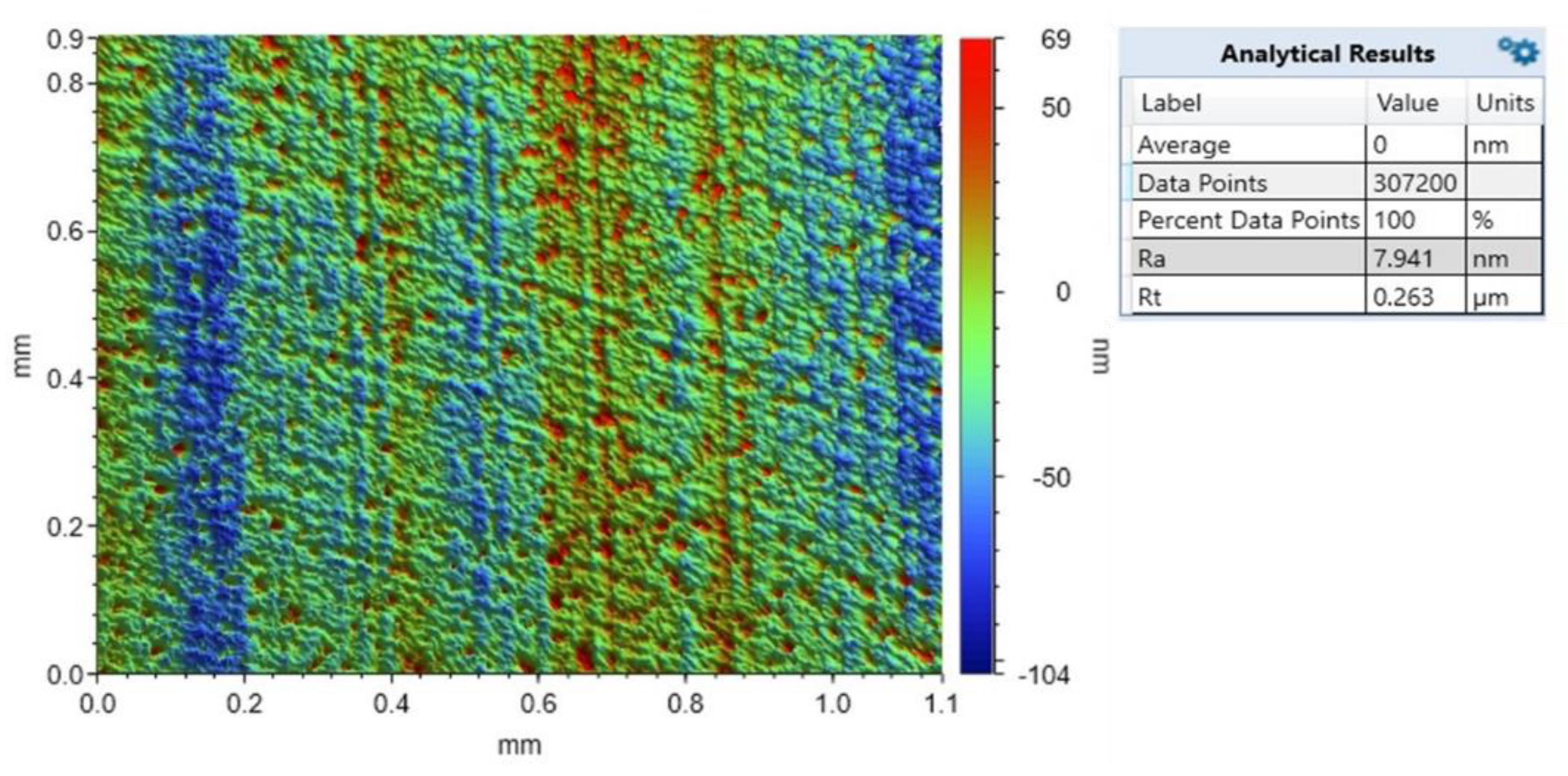
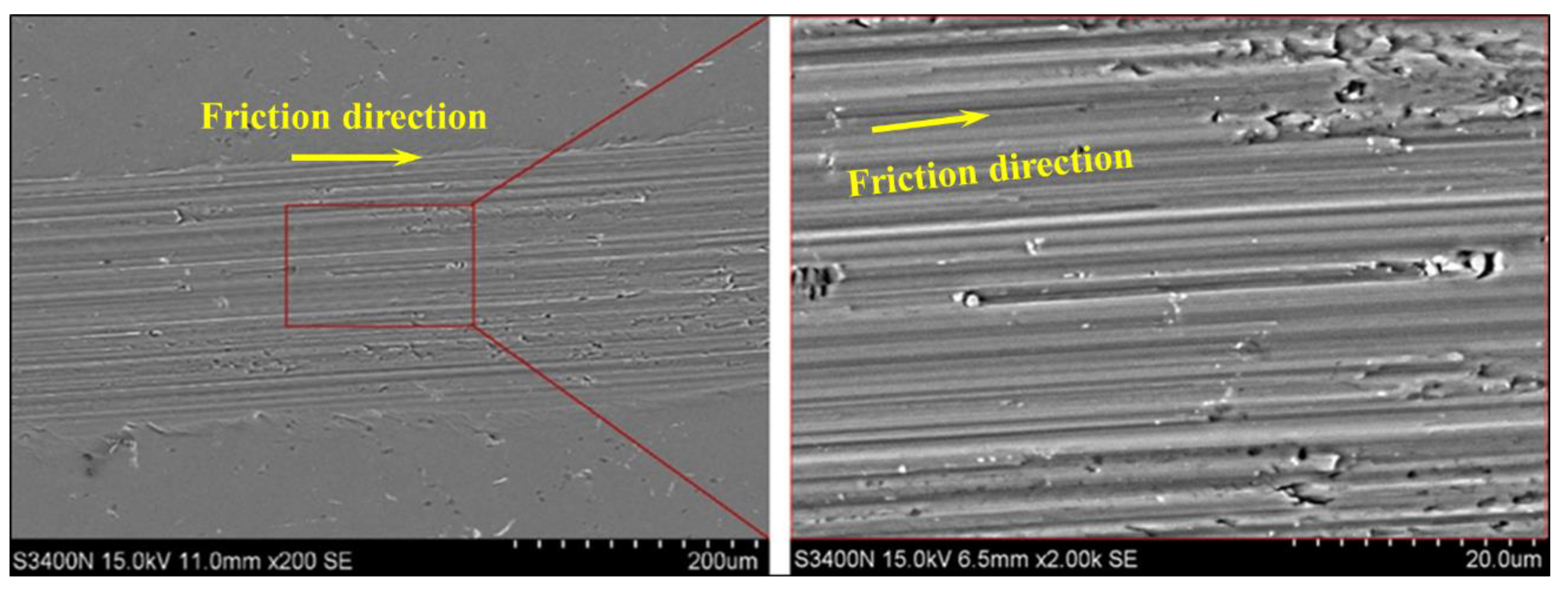

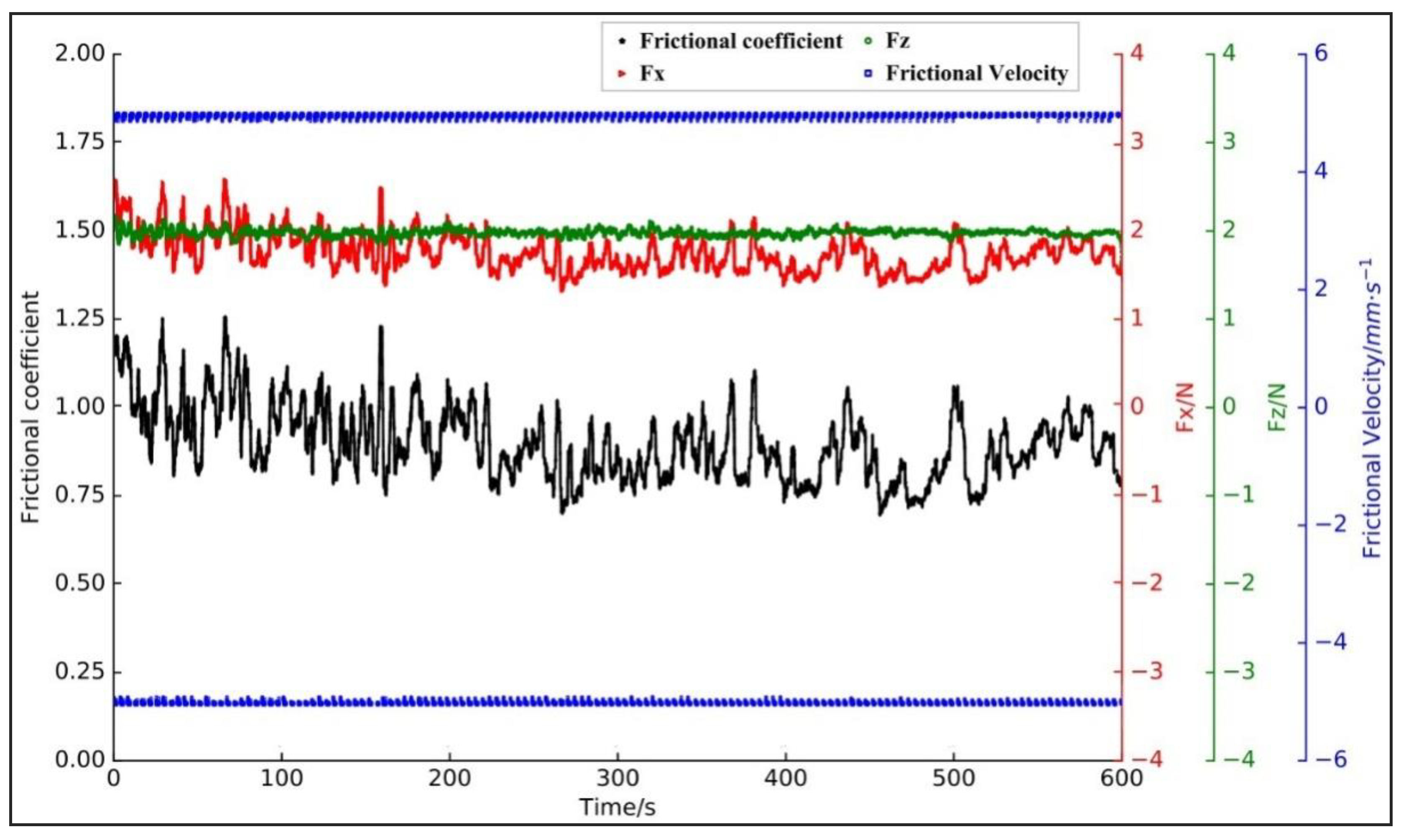


| Area No | Al | Mg | Si | Fe | Ti | Cr | Mn | Ni | Cu |
|---|---|---|---|---|---|---|---|---|---|
| I | 80.936 | 1.311 | 6.957 | 9.012 | 0.061 | 0.042 | 0.861 | 0.057 | 0.763 |
| II | 85.385 | 1.178 | 5.125 | 6.98 | 0.007 | 0.049 | 0.73 | 0.117 | 0.429 |
| III | 66.01 | 12.371 | 21.128 | 0.083 | 0.071 | 0.048 | 0.068 | 0.031 | 0.19 |
| IV | 67.545 | 11.911 | 20.008 | 0.063 | 0.056 | 0.06 | 0.073 | 0.053 | 0.231 |
| Base surface | 97.168 | 1.312 | 0.701 | 0.47 | 0.042 | 0.059 | 0.059 | 0.068 | 0.121 |
© 2020 by the authors. Licensee MDPI, Basel, Switzerland. This article is an open access article distributed under the terms and conditions of the Creative Commons Attribution (CC BY) license (http://creativecommons.org/licenses/by/4.0/).
Share and Cite
Wang, H.; Zhang, T.; Wang, S.; To, S. Characterization of the Friction Coefficient of Aluminum Alloy 6061 in Ultra-Precision Machining. Metals 2020, 10, 336. https://doi.org/10.3390/met10030336
Wang H, Zhang T, Wang S, To S. Characterization of the Friction Coefficient of Aluminum Alloy 6061 in Ultra-Precision Machining. Metals. 2020; 10(3):336. https://doi.org/10.3390/met10030336
Chicago/Turabian StyleWang, Hailong, Tao Zhang, Sujuan Wang, and Suet To. 2020. "Characterization of the Friction Coefficient of Aluminum Alloy 6061 in Ultra-Precision Machining" Metals 10, no. 3: 336. https://doi.org/10.3390/met10030336
APA StyleWang, H., Zhang, T., Wang, S., & To, S. (2020). Characterization of the Friction Coefficient of Aluminum Alloy 6061 in Ultra-Precision Machining. Metals, 10(3), 336. https://doi.org/10.3390/met10030336






